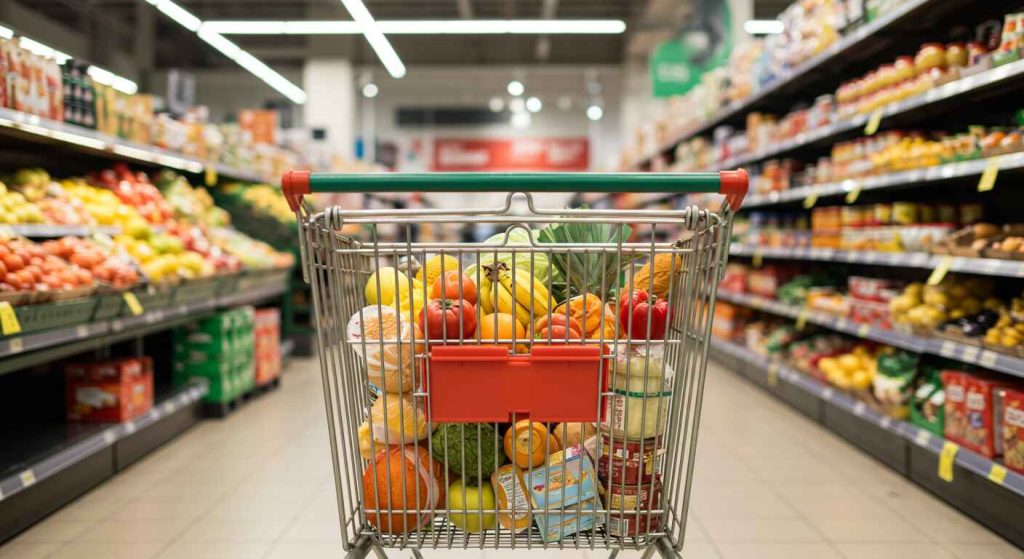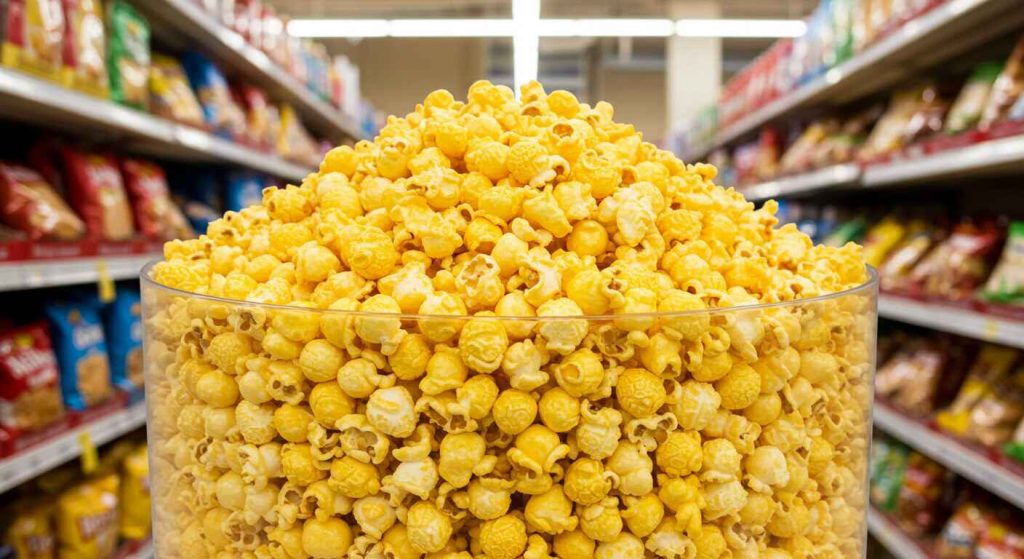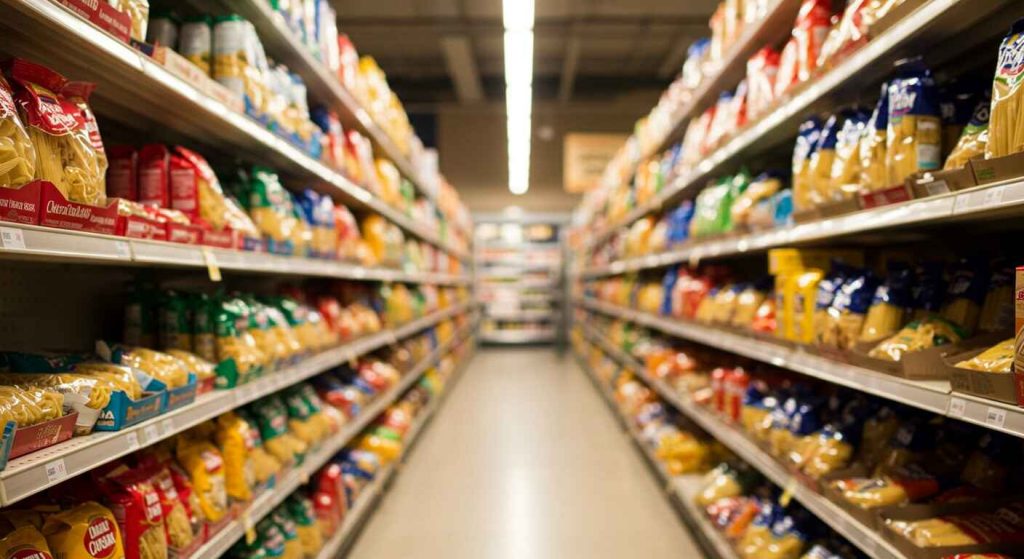Your query is what to buy at the grocery store? So grocery shopping can feel a lot. Between juggling a budget, figuring out what’s actually healthy, and trying to avoid buying five bags of chips on impulse… yeah, it’s a whole thing.
But don’t worry. Whether you’re shopping for one or feeding a full house, we’ve got a clear, simple guide on what to buy at the grocery store. No fluff. Just real food that works for real life.

First, Let’s Keep It Simple
Actually you don’t need to fill your cart with trendy stuff or fancy ingredients. Grocery shopping should make your week easier, not harder.
So, before you hit the store, ask yourself:
- What meals do I want to cook this week?
- What snacks keep me full and happy?
- What’s running low at home?
This helps you skip the stress and focus on what you really need.
The Basics: Grocery Must-Haves
Here’s a smart and simple list that works for pretty much everyone:
Fresh Produce
Go for a mix of fruits and veggies — whatever’s in season (it’s usually cheaper and tastes better too!).
Top picks:
- Apples or bananas (great for quick snacks)
- Carrots, cucumbers, or bell peppers (easy to chop for meals or dip)
- Leafy greens like spinach or romaine (for salads or sandwiches)
- Onions and garlic (they make everything better)
Pro Tip: Frozen veggies are awesome too, they last longer and are just as good for you.

Grains & Bread
Carbs aren’t the enemy. They keep you full and energized.
Stock up on:
- Whole wheat bread or sandwich rolls
- Brown rice or white rice (depends on what you like)
- Pasta or noodles
- Oats (for breakfast or baking)
Try this: If you’re tight on time during the week, grab some microwave-ready rice or quinoa.
Proteins (Not Just for Bodybuilders)
You don’t need a giant steak to get your protein fix. Just pick what works for your lifestyle and budget.
Some solid options:
- Chicken breast or thighs
- Ground beef or turkey
- Canned tuna or salmon (budget-friendly and lasts long)
- Eggs (super versatile)
- Peanut butter or nut butters (yes, they count!)
Vegan or vegetarian? Beans, lentils, tofu, and chickpeas are total champs.
Are you interested in finding the cheapest grocery stores? We've already covered that in a separate blog, be sure to check it out and start saving more on every trip!
Dairy (or Dairy-Free)
Whether you’re team milk or almond milk, it’s all about what works for you.
Consider these:
- Milk or dairy-free alternatives
- Yogurt (a great snack or breakfast)
- Cheese (sandwiches, pasta, tacos)
- Butter or margarine (for cooking, baking, or toast)

Pantry Staples
These are the little things that bring big flavor and keep meals interesting.
Don’t forget:
- Salt, pepper, and basic spices (like garlic powder, chili flakes)
- Olive oil or vegetable oil
- Pasta sauce or tomato paste
- Broth or bouillon cubes
- Canned goods: beans, corn, tomatoes
Quick tip: Keep a couple of instant soups or ramen packs, they’re lifesavers on lazy nights.
Drinks
You don’t need 10 types of soda, but having a few drink options is always nice.
Keep it simple:
- Water (or a reusable bottle to refill!)
- Juice (especially for kids or breakfast)
- Coffee or tea (morning must-haves)
Smart Snacks (Because, Yes, You Deserve Snacks)
We all snack. The trick is stocking up on ones that don’t wreck your energy.

Snack ideas:
- Popcorn
- Crackers with cheese or hummus
- Granola bars
- Trail mix or nuts
- Fruit (dried or fresh)
- Yogurt cups
Pro tip: Buy snacks you like otherwise, they’ll just sit there, untouched.
Think in Meals, Not Just Ingredients
Sometimes we load up on random stuff… then get home and realize we can’t make a single complete meal.
So here’s a trick: plan out 3–4 go-to meals before your grocery run. Nothing fancy just meals you know how to cook (or heat up without crying).
Example:
- Taco night: tortillas, ground beef, shredded cheese, salsa, lettuce
- Stir-fry: chicken, frozen veggies, rice, soy sauce
- Pasta night: pasta, tomato sauce, garlic bread, a bagged salad
- Breakfast-for-dinner: eggs, toast, hash browns, fruit

Now your shopping list is basically half done!
Don’t Forget the Non-Food Stuff
The grocery store isn’t just for food. You’ll save a second trip (and your sanity) by grabbing a few household basics too.
Non-food essentials to check:
- Toilet paper & paper towels
- Soap, shampoo, toothpaste
- Dish soap or dishwasher pods
- Trash bags
- Cleaning wipes or spray
- Laundry detergent
Pro Tip: Check your bathroom and kitchen before heading out. Nothing’s worse than running out of TP midweek.
Budget-Friendly Tips That Actually Work
We all want to save money. Here are a few super doable ways to keep your bill low without eating plain rice every night.

Make a list (and stick to it)
Impulse buys can quietly blow your budget. If it’s not on your list, stop and ask: Do I really need this?
Shop store brands
They’re usually just as good as name brands but way cheaper. Give them a shot.
Look high and low
Stores often put pricier items at eye level because there are the brands items. Look on the top and bottom shelves for better deals.
Buy in bulk (only when it makes sense)
When you have really need of a huge quantity of grocery then go for Big packs of rice, oats, or toilet paper which can save money, if you’ll actually use them.
Avoid shopping when hungry
You’ll end up with cookies, chips, and everything else your stomach whispers for. Eat first, shop smart later.
Freezer is Your Best Friend
Want meals ready in a snap? Stock your freezer with stuff that lasts and saves time.

Freezer MVPs:
- Frozen veggies and fruit
- Pre-cooked meals (like frozen lasagna or burritos)
- Chicken nuggets, fries, or fish sticks
- Frozen waffles or pancakes
- Ice cream (hey, you’ve earned it)
Frozen doesn’t mean “bad.” It just means “convenient.”
One Last Thing — Make It Yours
There’s no “perfect” grocery list. What matters is that your cart works for your life, your budget, and your taste.
So here’s how to build your own perfect list:
- Pick 4–5 meals you love
- List out the ingredients
- Add snacks, drinks, and basics
- Double-check home supplies (like soap, TP, etc.)
- Stick to the list, but allow one fun treat
Final Thoughts: Grocery Shopping Doesn’t Have to Be Stressful
At the end of the day, grocery shopping isn’t about having a Pinterest-perfect pantry. It’s about feeding yourself (and maybe your family) with food that keeps you going.
When you keep things simple, shop smart, and trust yourself, you’ll walk out of that store with everything you need and none of the stuff you don’t.
So next time you’re wondering what to buy at the grocery store, remember:
- Fresh + frozen = win
- Plan a few meals ahead
- Snacks are not evil
- Shop smart, not fancy
And hey, maybe grab a little chocolate on the way out. Just for fun :p.
Frequently Asked Questions (FAQs)
What do people buy most in grocery stores?
According to a Statista survey (2023–2024):
64% of shoppers most frequently buy fruits and vegetables
60% often buy eggs
These are popular because they’re healthy, affordable, and easy to use in meals.
What should I buy for grocery shopping?
Start with the basics:
Meat or seafood
Bread, rice, or pasta
Cooking oils and butter
Eggs and dairy (milk, cheese, yogurt)
Fresh or frozen fruits and veggies
Also include household essentials like toilet paper, soap, toothpaste, cleaning supplies, and pet food if needed.
What is the 5-4-3-2-1 grocery shopping method?
This method helps you build a balanced grocery list each week:
5 vegetables
4 fruits
3 grains (like pasta, rice, bread)
2 proteins (like chicken, tofu, or beans)
1 dairy item + 1 condiment
1 fun 1 treat (like chocolate or chips)
It’s simple, smart, and keeps your meals interesting and healthy.
What’s normal to spend on groceries?
The average grocery cost in the U.S. is about $504 per month, according to national data. Your spending may vary based on:
Family size
Eating habits (fresh vs. packaged)
Location
Set a realistic budget and track your receipts to find what works for you.
What is the most profitable grocery item?
Grocery stores earn the most from:
Fresh meats and produce
Baked goods (like cakes, cookies, bread)
Prepared meals (like rotisserie chicken, deli items)
These have higher markups than shelf-stable items like canned goods or dry pasta.

